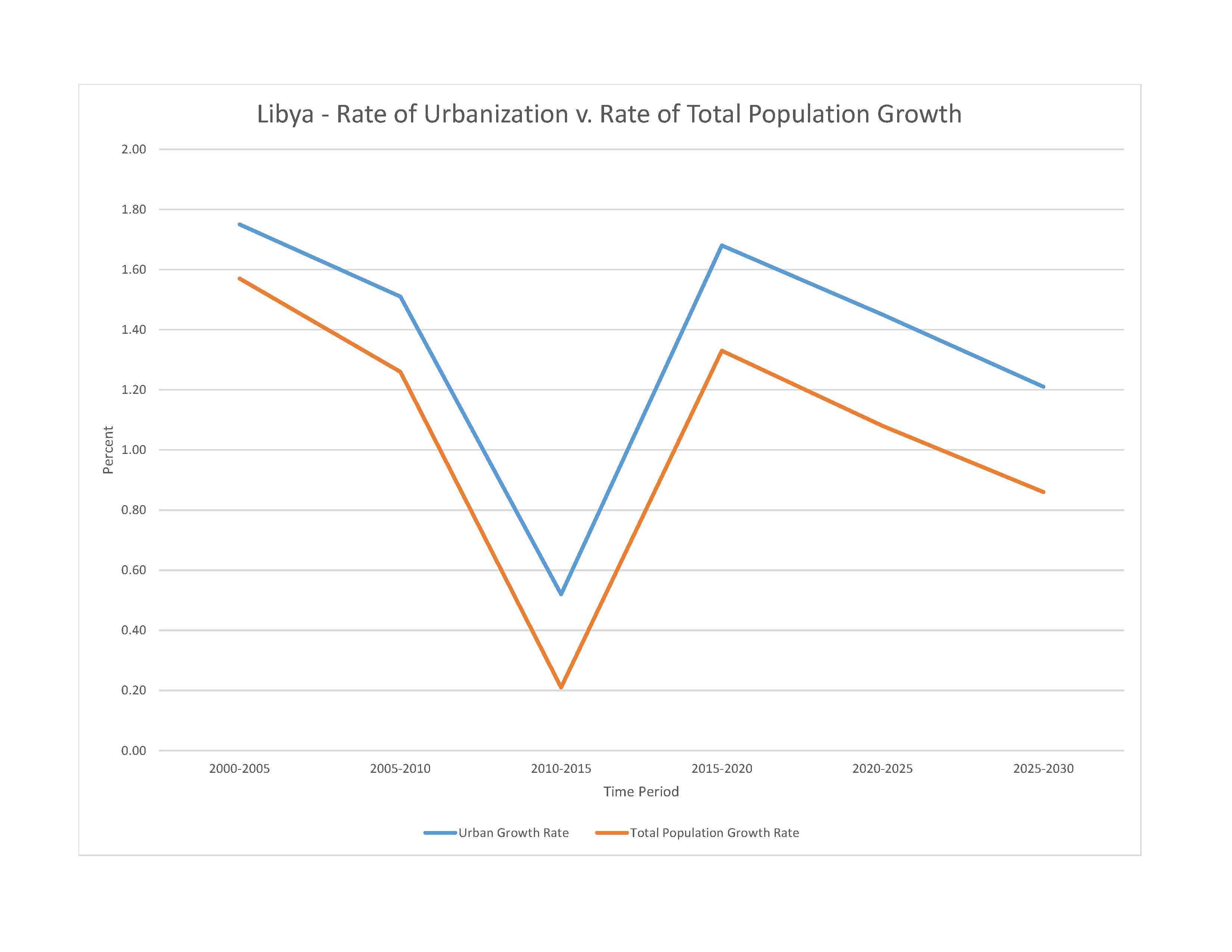
desertification; limited natural freshwater resources; the Great Manmade River Project, the largest water development scheme in the world, brings water from large aquifers under the Sahara to coastal cities; water pollution is a significant problem; the combined impact of sewage, oil byproducts, and industrial waste threatens Libya's coast and the Mediterranean Sea
party to: Biodiversity, Climate Change, Climate Change-Kyoto Protocol, Comprehensive Nuclear Test Ban, Desertification, Endangered Species, Hazardous Wastes, Marine Dumping-London Convention, Nuclear Test Ban, Ozone Layer Protection, Ship Pollution, Wetlands
signed, but not ratified: Climate Change-Paris Agreement, Law of the Sea
Mediterranean along coast; dry, extreme desert interior
agricultural land: 8.8% (2018 est.)
arable land: 1% (2018 est.)
permanent crops: 0.2% (2018 est.)
permanent pasture: 7.6% (2018 est.)
forest: 0.1% (2018 est.)
other: 91.1% (2018 est.)
urban population: 81.6% of total population (2023)
rate of urbanization: 1.45% annual rate of change (2020-25 est.)

severe localized food insecurity:due to civil insecurity, economic and political instability, and high food prices - an estimated 800,000 people, 10% of the population, need humanitarian assistance, of which 500,000 require food assistance; the country relies heavily on imports (up to 90%) to cover its cereal consumption requirements (mostly wheat for human consumption and barley for feed); between 2016 and 2020, the country sourced over 30% of its wheat imports from Ukraine, and 20% from the Russian Federation; almost 65% of total maize imports of 650,000 mt, and 50% of total barley imports of 1 million mt originated from Ukraine, making the Libya vulnerable to disruptions in shipments from the Black Sea region (2022)
0.06% of GDP (2018 est.)
0% of GDP (2018 est.)
particulate matter emissions: 29.84 micrograms per cubic meter (2019 est.)
carbon dioxide emissions: 50.56 megatons (2016 est.)
methane emissions: 45.76 megatons (2020 est.)
municipal solid waste generated annually: 2,147,596 tons (2011 est.)
Internal (endorheic basin) drainage: Lake Chad (2,497,738 sq km)
Nubian Aquifer System, North Western Sahara Aquifer System, Murzuk-Djado Basin
municipal: 700 million cubic meters (2020 est.)
industrial: 280 million cubic meters (2020 est.)
agricultural: 4.85 billion cubic meters (2020 est.)
700 million cubic meters (2020 est.)
NOTE: The information regarding Libya on this page is re-published from the 2024 World Fact Book of the United States Central Intelligence Agency and other sources. No claims are made regarding the accuracy of Libya 2024 information contained here. All suggestions for corrections of any errors about Libya 2024 should be addressed to the CIA or the source cited on each page.
This page was last modified 04 May 24, Copyright © 2024 ITA all rights reserved.